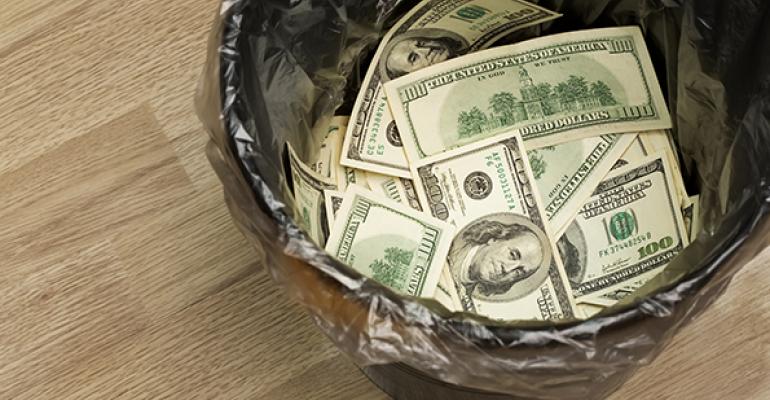As income investments go, high-yield bonds are fair-weather friends. In sunny economies, you want them in your portfolio. But when the economic outlook darkens, they can be volatile.
But bonds from corporations with riskier credit profiles fill an important niche. For taking on a higher default risk, you get a much higher yield.
Those yields, which averaged above 6% as this goes to press, compare to about 3% for U.S. Corporate Bonds, according to the Dow Jones Market Data Center, and just under 2% for 10-year U.S. Treasury Bonds.
Although the junk bond market suffered some yips last year – resulting in a sell-off – many analysts believe they offer some advantages beyond their yield that will secure their place in any long-term income portfolio.
“As of July 8, the BofAML US High Yield Master II Index -- a commonly used benchmark for HY managers -- was yielding 6.8%, or an option-adjusted spread of 5.2 percentage points over Treasuries,” according to Sumit Desai, a Morningstar analyst. That premium yield is often worth the extra risk to investors still struggling with short-term government bond yields at 1% or less.
Investors, though, remain skittish about exchange-traded and mutual funds that hold junk bonds. While total net assets in high-yield bond mutual funds and ETFs have climbed some $2 billion this year through June 30, according to Morningstar, investors have pulled some $8 billion from the funds over the past two months.
Investor Carl Icahn, for one, has been warning of a bubble in high-yield bonds, as investors have flooded into the space to scrape up that extra yield. When interest rates rise, the theory goes, and high-yield investors head for the exits, selling the funds that hold these securities, the market for the bonds themselves, already a relatively thin market, may fall hard.
The counter argument is that unlike most bonds, which decline in value when interest rates rise – or are expected to climb – junk bond prices are closely tied into the financial health of the companies issuing them. As such, they move more with the stock market.
Such was the case last year when junk bonds took a hit when oil prices sank from around $100 a barrel last June. The U.S. benchmark has been hovering around $50 a barrel for West Texas Intermediate Crude Oil after hitting a low of about $45 earlier this year.
Since oil & gas companies represent some 15% of junk bond issuers – one of the biggest sectors in this asset class – the oil price drop triggered a sell-off in the large high-yield bond market.
And the uncertainty in the petro market is far from over: Another wild card could be Iran re-entering the oil market, if the U.S. lifts sanctions against the Islamic Republic. More oil in global markets may depress prices further and lead to more pressure on junk bonds, so the volatility has not been eliminated.
A Small Degree of Insulation
Junk bonds also carry shorter maturities than most corporate and government bonds and are attuned to larger changes in the economy. That gives them a small degree of insulation if rates rise overall.
“High yield bonds will continue to do well if rates rise,” says Julianne Bass, a bond portfolio manager with USAA Investments in San Antonio. “They are less volatile than other bonds and are still attractive.”
One the downside, though, if the U.S. economy contracts and issuers become cash challenged, that could lead to defaults. If you’re going to hold high-yield bonds for your clients, they should comprise no more than 5 percent of their portfolios, advisers recommend. Unless clients are paying you to do tactical management, timing buy/sell moves should be avoided.
“Individual investors have been pretty poor at timing the [junk bond] market,” adds Desai. “Keep them as part of a long-term strategic holding.”
If you’re nervous about bond market risk and working with an adviser or money manager, consider junk bonds as a “tactical” holding that can be reduced when market conditions change.
“For high yield bonds, our position is always tactical,” notes John Zhong, an analyst with MyPlanIq.com, an on line portfolio allocation service. “At the moment, these bonds can suffer from big losses as rates are low, and markets are full of low-quality loans and bonds that companies issued for stock repurchases and mergers.”
Another way to avoid trouble is to hold junk bonds long term within a broad-based exchange-traded fund. You can obtain more diversification and reduce default risk.
Desai suggests the two largest junk bond ETFs in terms of assets.
The iShares iBoxx $ High Yield Corporate Bond Fund (HYG), holding some $13 billion in assets, yields 5.6% and returned 1.3 percent year to date through July 9, compared to a loss o 0.10% for the benchmark Barclay’s US Aggregate Total Return Index. The fund charges 0.50% for annual management expenses.
Like the iShares fund, the SPDR Barclays High Yield Bond ETF (JNK), tracks an index of junk bonds. It’s yielding nearly 6% and charges 0.40% for annual management expenses. It’s up nearly 2% year to date through July 9.
Although junk bond prices will feel the impact of rising interest rates in the larger fixed-income market, their closer connection to stocks and the economy may be an advantage if and when the Federal Reserve ratchets up lending rates. But if you believe rising rates signals a stronger economy, they still may offer reasonable yield plays.


